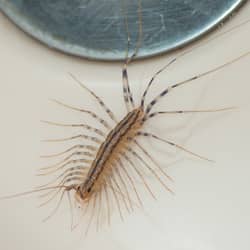If you've wondered what differences there are between centipedes and millipedes, you've come to the right place. Today, we're going to discuss the similarities and differences between these two pests and give you some ideas about how to deter them from living in your home.
Similarities
Centipedes and millipedes are both from the group Myriapoda, a subphylum of arthropods which refers to creatures that are terrestrial and have many legs. They are both considered moisture pests, and will prefer areas of a home that have a high humidity, weeping pipes, or water. Both of these creatures are able to climb walls and walk across ceilings.
Differences
While both centipedes and millipedes are myriapoda, they belong to different classes. Centipedes are of the Class Chilopoda, and millipedes are of the Class Diplopoda. The distinction between these two classes is in how many sets of legs can be found on each body segment. Centipedes (Chilopoda) have one pair of legs. Millipedes (Diplopoda) have two sets on most body segments.
Centipedes and millipedes have different diets. While millipedes are detritivores and feed mostly on decaying organic matter and the roots and leaves of seedling plants, centipedes have no interest in these things. Centipedes are carnivorous and predatory. They hunt other creatures, and use their venom to neutralize their prey. Inside a home, these creatures will be somewhat beneficial, in that they will kill and consume other undesirable pests, such as cockroaches, spiders, ants, silverfish, termites, and even bed bugs. But, they are by no means a satisfactory solution for any of these other pests.
Centipedes move quickly. Millipedes do not. You are much more likely to be startled by a centipede on your wall.
The legs of a centipede shoot out to the sides. Millipedes have legs that shoot straight down from their body segments.
You can handle a millipede with no danger. But, it is unwise to handle centipedes. The bite from a centipede can be painful, though not medically important.
Control
Centipedes and millipedes can be deterred in the same way.
-
Make sure all window and door screens are in good working order.
-
Make sure all weather stripping and door sweeps make good contact.
-
Repair damaged mortar around basement windows.
-
Seal holes or gaps in exteriors walls using a caulking gun, until those areas can be properly repaired.
-
Use dehumidifiers and fans to keep basement areas dry.
-
Get ongoing pest control from a certified pest professional.
If you live in our Tennessee service area, reach out to us. All-American Pest Control offers affordable and effective pest solutions for a wide range of invasive bugs. Ask us about our no-obligation, free, home evaluations, and get started today.
 1426 Reviews
1426 Reviews


